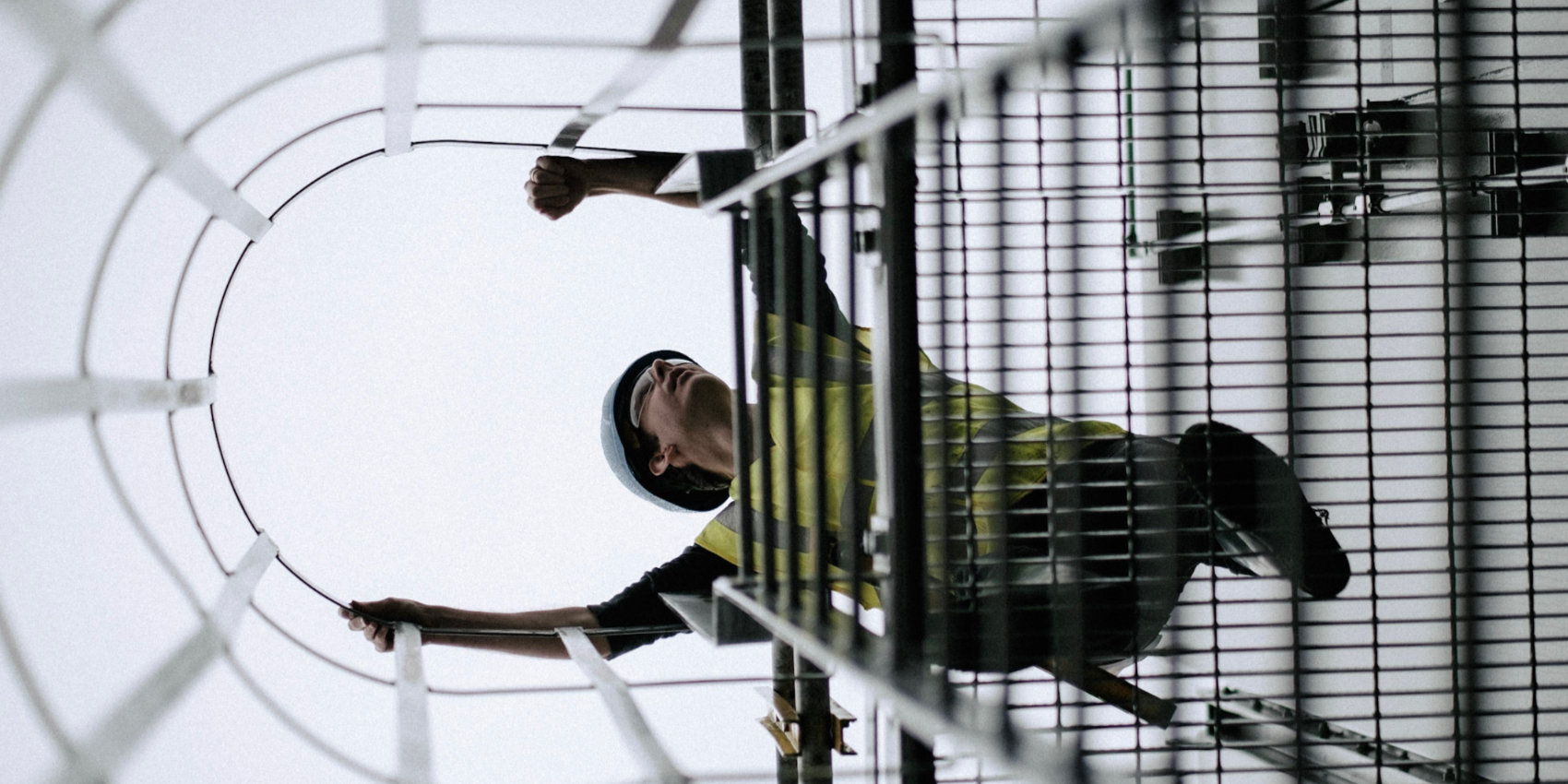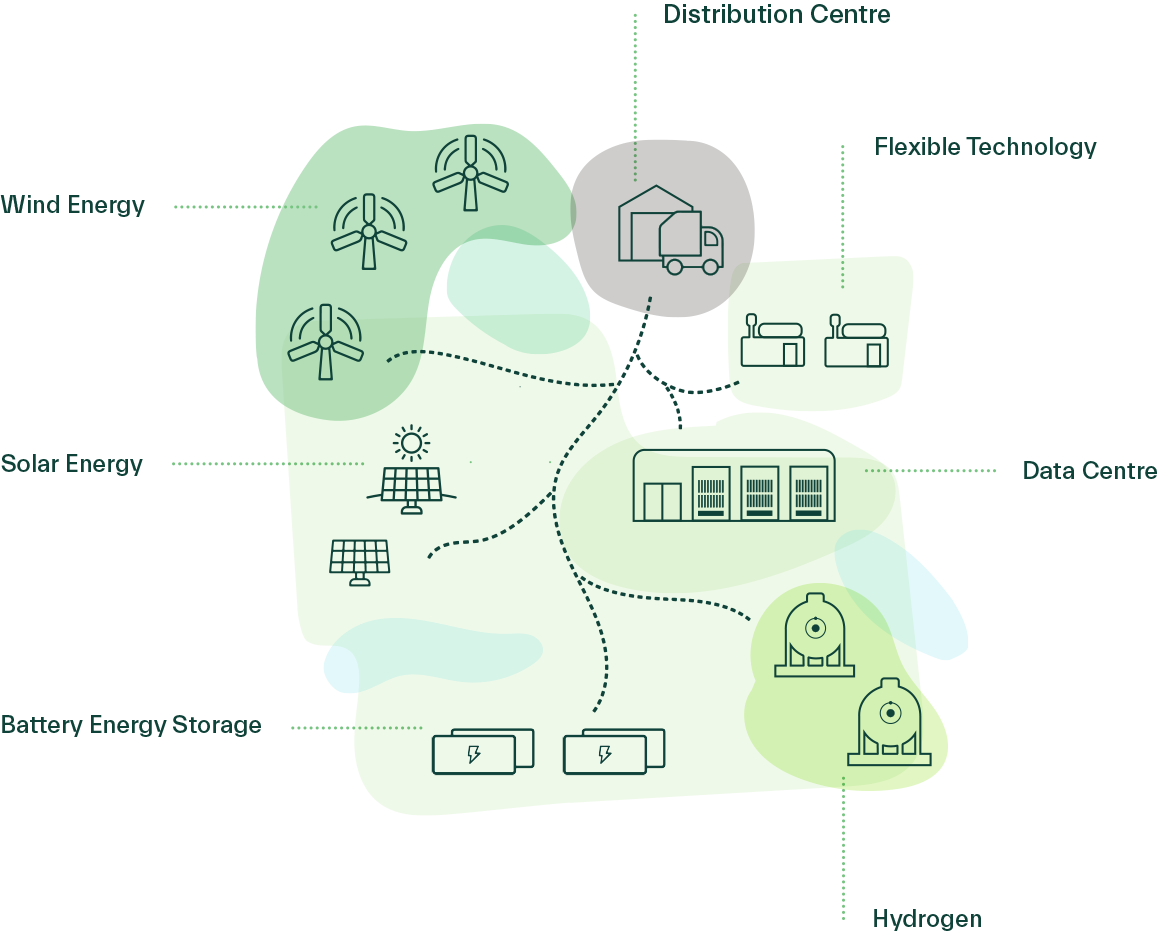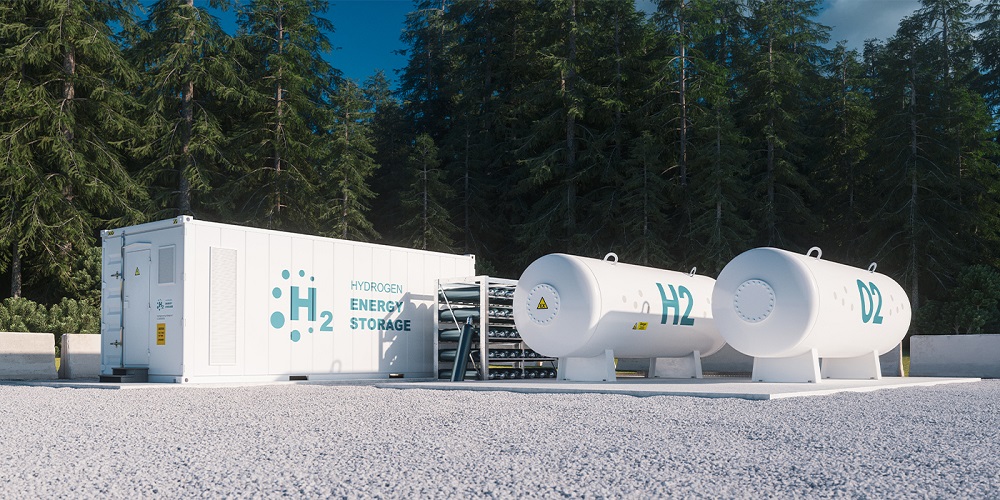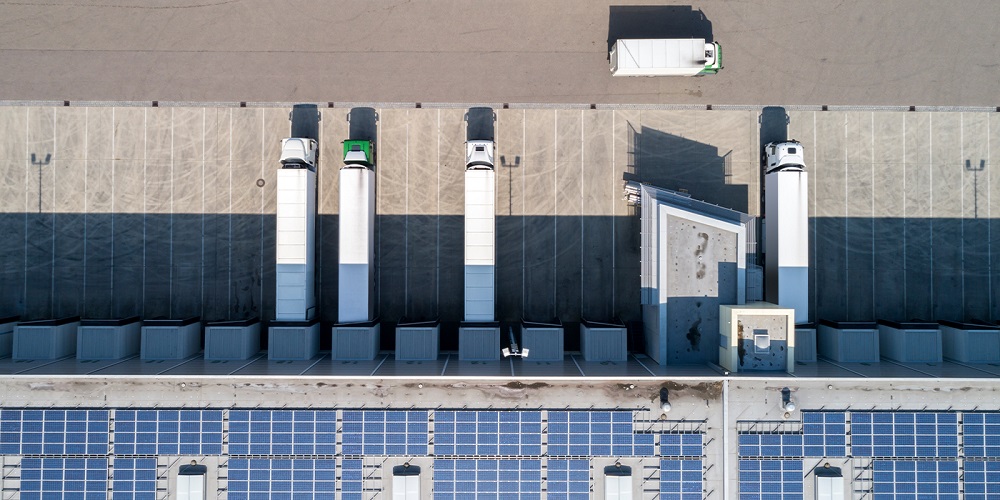Wind is Ireland’s largest contributing resource of renewable energy. Energy is generated when wind spins the blades of a wind turbine. A generator then converts this energy into electricity. Bord na Móna has a strong record of siting, designing and delivering wind farms across its peatlands, including Bellacorick, Bruckana, Mountlucas and Cloncreen Wind Farms. These lands were once harvested for peat but are now being rehabilitated for renewable energy infrastructure, biodiversity and local public amenities.
Powering the future with clean energy technology
Bord na Móna will be examining a range of low to zero carbon energy generation and energy storage assets for inclusion in our Eco Energy Park.

What is a renewable energy asset?
Renewable energy is energy that can be replenished from natural sources, such as the wind, sun and trees. This energy is generated with either little or no carbon footprint.

Energy Generation

Solar panels that produce electricity are known as solar photovoltaic (PV) modules. Made from semiconducting materials, they can be used to generate electrical current from daylight — even on cloudy days. A solar farm is a large-scale renewable energy facility where large numbers of solar photovoltaic (PV) panels are used to generate renewable electricity from the sun.
‘FlexTech’ or flexible technologies refer to various technologies which will assist the electricity network of the future meet the challenges it faces. Examples include hydroelectric power, large utility scale batteries (and similar forms of short-term storage), demand side management (the ability to reduce large demand users at times of peak demand).
Energy Storage

Renewable energy technologies now generate large amounts of our electricity. Because much of this energy is intermittent, effective energy storage solutions are increasingly important. Hydrogen is a clean fuel that, when consumed in a fuel cell, produces only water. It is increasingly seen as a major solution for long-term, large-scale storage of energy. We can produce Hydrogen from water using renewable-powered electrolyzers. The hydrogen is then stored and can be used as fuel for piston engines, gas turbines, or hydrogen fuel cells.
As wind and solar energy are dependent on weather conditions they are an intermittent form of energy. This means energy is not necessarily generated at times of peak demand. In order to balance energy generation and demand, power system operators must be able to store excess energy until it is required. Battery storage is one of several technology options that can enhance power system flexibility and enable high levels of renewable energy integration
Energy Users

Data centres are high-demand energy users and will account for a large proportion of the Annual Electricity Demand in Ireland in the coming years. A reliable, high-capacity energy supply is essential for data centres, and sites which have multiple independent fibre and electricity grid connections are preferred. Both Government policy and EirGrid are now seeking to move data centres outside of the Dublin area in order to spread demand across the national grid.
A distribution centre is a product storage and shipping building that stores and ships goods. They are a key part of the distribution chain for products. Depending on the goods a distribution centre stores, they may use large amounts of energy: refrigeration is common for perishables, while other goods may be heated. As well as energy, distribution centres require significant land and access to the national motorway network.
The Energy Park will generate sufficient renewable energy to power a number of sectors that play an important role in Ireland’s social and economic development, such as, Manufacturing, Pharmaceutical, Agrifood, ICT, Transport, Green Hydrogen derived E-Fuels and Logistics. Bord na Móna’s Eco Energy Parks will not only help these industries to pursue low-carbon growth of their operations but will also significantly contribute to and support associated enterprise, community initiatives, local amenities, and the local natural environment.
